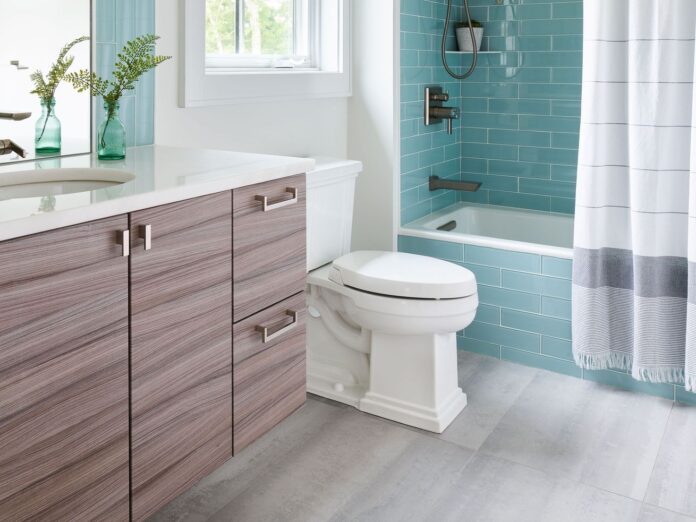[ad_1]

With so many plungers in the market, which one is right for your toilet? Learn how to pick out the best plunger and use it properly when disaster strikes in the bathroom.
A clogged toilet can occur at any moment, and it’s never fun when it happens to you. But the mess and stress can easily be addressed if you have the right plunger and know how to use it. Here’s how to handle this household emergency when it arises.
Steps for Plunging a Toilet
Step 1: Get the right type of plunger
The key to resolving most clogged toilets efficiently is to have the right kind of toilet plunger. When most people think of a plunger, they envision the standard plunger, where the rubber cup part resembles a dome. Standard plungers are helpful in fixing clogged sinks or tubs, but the best tool for unclogging a toilet is the flanged plunger, which has a sleeve-like extension (or flange) projecting from the cup.
The flange allows the plunger to fit inside the toilet’s drain and form a tight seal, increasing its suction.
If you have a newer, high-efficiency toilet with an oblong-shaped drain, a beehive plunger is the best option. But no matter which plunger you use, it’s important to make sure the handle is on the longer side, so you’ll be able to use it without getting too close to the toilet and all that sloshing water.
Step 2: Prepare the area—and yourself
Even with the right plunger, unclogging a toilet can be messy. Remove any bathroom rugs or items on top of the toilet tank before starting the job. Water may splash out of the toilet bowl as you’re working, and it’s easier to move things out of the way than it is to have to clean them afterward. You’ll also want to wear rubber gloves and have paper towels handy.
If the toilet bowl is nearly overflowing with water, don’t keep flushing it and hoping for a miracle—it will only spill over and make a mess. Wait a few minutes for the water level to decrease on its own and then turn off the water supply.
If the water level in the bowl is still very high, bail out a bucketful or two, until the bowl is about half-filled. The less water, the less mess. But you’ll want to make sure there’s enough standing water in the bowl to cover the plunger head.
Don’t attempt to plunge a toilet if you’ve already poured a drain-clearing solution into the bowl. Many contain highly corrosive chemicals that aren’t safe for your skin and are formulated for use on clogs in sinks and tubs, not toilets.
Step 3: Plunge the toilet
Lower the plunger into the toilet bowl, making sure to form a tight seal between the plunger and the drain, or the plunger won’t work properly. The extension should be positioned in the drain hole, while the lip of the cup sits around the opening. The handle should be pointing straight out of the bowl, instead of at an angle.
When you form a good seal with the plunger, the cup will be filled with air, so make your initial thrust a gentle one to maintain the seal. A thrust that’s too forceful can push the air around too quickly, breaking the seal and causing water to shoot out of the bowl!
After your first plunge, start plunging with more pressure. Depending on the size of the clog, it may take a dozen or so tries to clear it. If the clog is difficult to dislodge, attempt a variety of thrusts, ranging from steady strokes to sudden, powerful pushes.
Step 4: Reassess the situation
After plunging for at least a minute, try flushing the toilet. If you’ve succeeded in dislodging the clog, your toilet will flush normally. If not, repeat Step 3. If you’re still unsuccessful after several attempts, try using a toilet auger.
Step 5: Clean the plunger
It’s necessary to thoroughly clean the plunger after use; as you can imagine, it’ll be covered in bacteria. Pour two cups of liquid bleach into the cleared toilet bowl, insert the plunger, and swirl it around for about a minute.
Remove the plunger, flush the toilet, and swirl the plunger in the fresh water to rinse it off. Flush again, and allow the plunger to dry before putting it away.
Good luck!
[ad_2]
www.thisoldhouse.com










